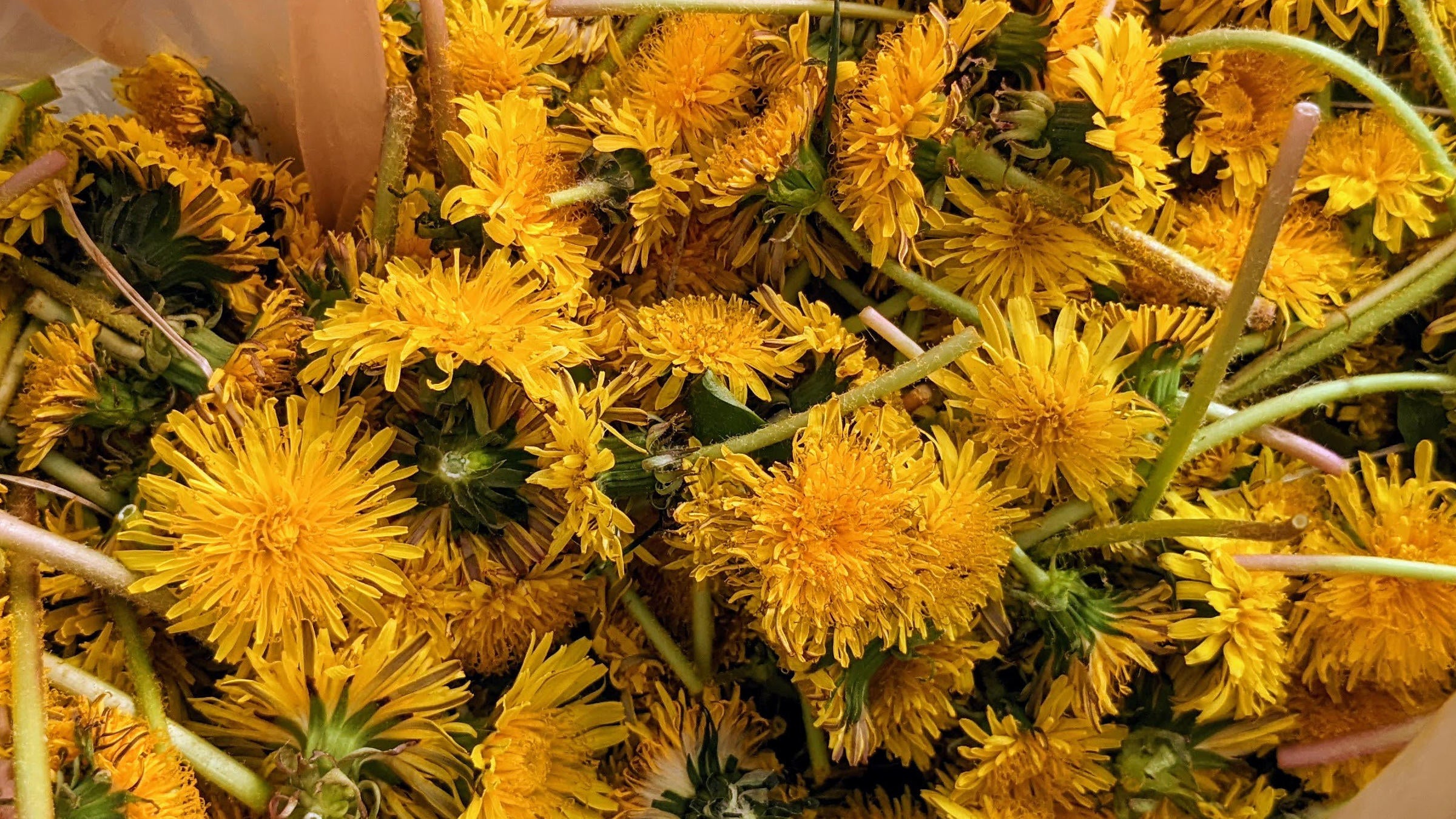4 Delicious Dandelion Recipes for Aspiring Foragers

Dandelions, gathered and ready for processing into jelly. (Photo: Adam Roy)
As spring weather ramps up dandelions are taking over yards, fields, and trailsides. But don’t curse those pesky weeds just yet—dandelions are a nutritious source of wild food packed with vitamins and minerals. Best of all, every part of the plant can be consumed. Go beyond the basic leafy salads and experiment with these foraged dandelion recipes great for camp or home.
Dandelion Root Tea
While the flowers and leaves can also be used to make a tea, dandelion roots are popular beverage ingredients because of their coffee-like flavor and digestion benefits.
Begin by harvesting dandelion roots in an area free of pesticides (the roots from one plant will make a few cups of tea). Spring and fall are the best times to harvest roots because they contain the most nutrients. Loosen the soil around the plant with a trowel or stick until you can firmly grasp the root and pull it out. Shake off the excess dirt and fill in the hole.
Clean the roots well and chop them into small pieces. Dry them in a dehydrator or roast at 200°F in the oven, turning often, until there’s no moisture remaining. Simmer the root pieces in a pot of water for 20 minutes, then strain and serve. For a more flavorful tea, add cinnamon, ginger, or honey.
Dandelion Flower Fritters
The bitter blossoms can be eaten raw as a salad topper, but they shine as a fried treat that can be easily whipped up at home or in camp. Collect the yellow flower heads from dandelions just before you intend to cook them.
Rinse the flowers and pat dry. Prepare a batter—this recipe from Food 52 is especially backcountry-friendly. Heat vegetable or canola oil in a pan (it should be just deep enough to submerge your fritters). Dip each dandelion blossom in the batter and fry until golden brown. Season with salt.
Dandelion “Noodles”
Plant stems are often overlooked by foragers, but contain as many nutrients and are as useful as the rest of the plant. Long dandelion stems work best for this pasta replacement—remember to only harvest where there are no pesticides. After cleaning your stems, place them in a pot of boiling water and cook as you would spaghetti. The noodles will be done after 5 to 8 minutes, or when tender and no longer bitter. Serve with your favorite sauce.
Dandelion Jelly
“No exaggeration: This floral, honey-like jelly is the best I’ve ever had, and is guaranteed to take your trail PB&Js to the next level. Gather a pint glass’s worth of dandelion blossoms (be careful pick the green parts off, or your jelly will be bitter) and steep them with four cups of boiling water until you get a dark, fragrant tea; let it completely cool off in the fridge. Strain the mixture in a mesh strainer, squeezing the flowers to get the last bit of liquid out, then add it to a pot with a box of pectin, a squeeze of lemon juice, and boil. Add four cups of sugar, cook for a minute or two, then let cool and store in your fridge or preserve in jars.” —Adam Roy